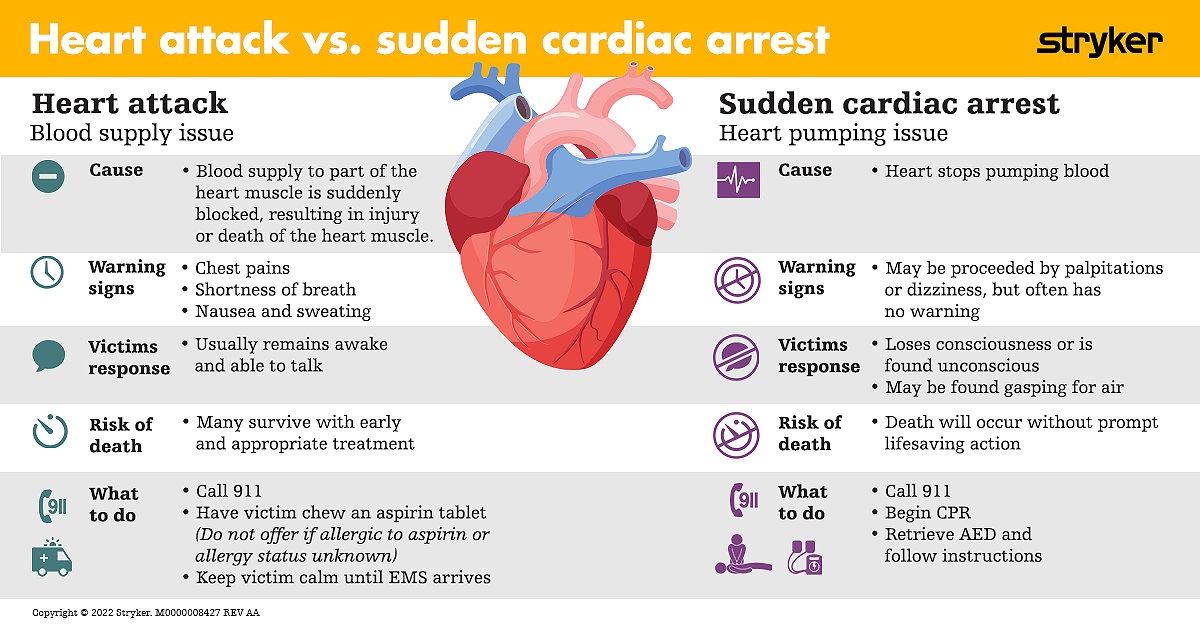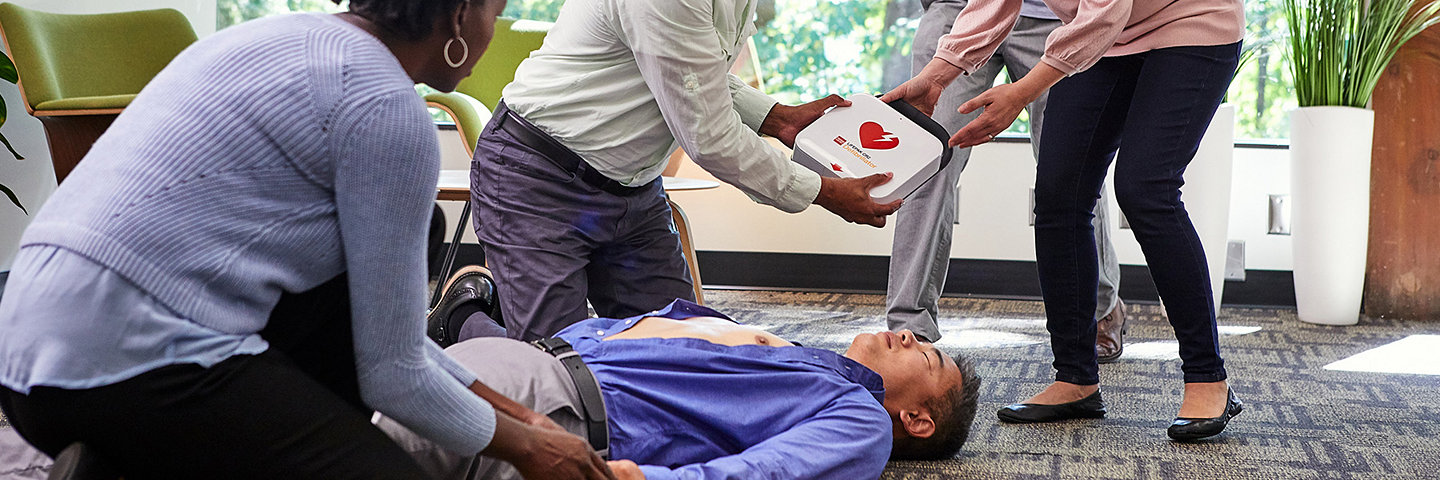10-Oct-2023
Heart attack and sudden cardiac arrest (SCA) are very different events, each presenting specific signs and symptoms, and requiring unique responses in an emergency.
Here are five things you should know1:
- Heart attacks and sudden cardiac arrests are both serious medical emergencies.
- A heart attack occurs when the blood supply going to the heart is blocked, while sudden cardiac arrest occurs when the heart suddenly stops pumping blood to the rest of the body due to a lethal abnormal heart rhythm.
- The symptoms of a heart attack can vary from person to person, but they may include chest pain or discomfort, shortness of breath, nausea or vomiting, lightheadedness or dizziness, sweating, and fainting.
- Sudden cardiac arrest can happen without any warning, but there are some risk factors that can increase your chances of having one. These include age, family history of heart disease, high blood pressure, high cholesterol, diabetes, smoking, obesity, and physical inactivity.
- If you think you or someone you know is having a heart attack or sudden cardiac arrest, it is important to call 911 immediately.
What role do AEDs play during sudden cardiac arrest?
Automated external defibrillators (AEDs), such as Stryker’s LIFEPAK CR2 AED and the HeartSine samaritan PAD 450P can help save lives by delivering an electric shock to the heart of someone experiencing sudden cardiac arrest. Reducing response time by even one or two minutes from collapse to AED shock can mean the difference between death and survival.2 While not everyone can be saved from SCA, early defibrillation provides the best chance for survival, especially when delivered within three to five minutes of collapse.3

For a brief summary of important disclosure and safety information, please visit this page.
References:
- Panchal A, Bartos J, Cabanas J, et al. Part 3: Adult Basic and Advanced Life Support. 2020 American Heart Association Guidelines for Cardiopulmonary Resuscitation and Emergency Cardiovascular Care. Circulation. 2020;142(suppl 2):S366–S468. Open access: https://www.ahajournals.org/toc/circ/142/16_suppl_2
- Mosesso Jr VN, et al. 2002. Proceedings of the National Center for Early Defibrillation Police AED Issues Forum. Prehospital Emergency Care. 6 (3):273–82.
- Ibrahim W, Recent advances and controversies in adult cardiopulmonary resuscitation, Postgraduate Medical Journal; 2007;83:649-54
M0000016477 REV AA


